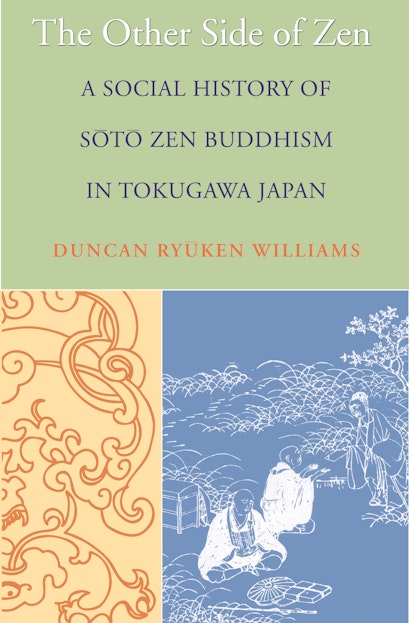The Other Side of Zen: A Social History of Sōtō Zen Buddhism in Tokugawa Japan


Paperback
ebook
- Sale Price:
- $23.80/£19.60
- Price:
-
$34.00/£28.00 - ISBN:
- Published:
- Jun 8, 2021
- Copyright:
- 2004
- 3 line illus. 7 halftones. 7 tables.
- Main_subject:
- Religion
30% off with code PUP30
Popular understanding of Zen Buddhism typically involves a stereotyped image of isolated individuals in meditation, contemplating nothingness. This book presents the “other side of Zen,” by examining the movement’s explosive growth during the Tokugawa period (1600-1867) in Japan and by shedding light on the broader Japanese religious landscape during the era. Using newly-discovered manuscripts, Duncan Ryuken Williams argues that the success of Soto Zen was due neither to what is most often associated with the sect, Zen meditation, nor to the teachings of its medieval founder Dogen, but rather to the social benefits it conveyed.
Zen Buddhism promised followers many tangible and attractive rewards, including the bestowal of such perquisites as healing, rain-making, and fire protection, as well as “funerary Zen” rites that assured salvation in the next world. Zen temples also provided for the orderly registration of the entire Japanese populace, as ordered by the Tokugawa government, which led to stable parish membership.
Williams investigates both the sect’s distinctive religious and ritual practices and its nonsectarian participation in broader currents of Japanese life. While much previous work on the subject has consisted of passages on great medieval Zen masters and their thoughts strung together and then published as “the history of Zen,” Williams’ work is based on care ul examination of archival sources including temple logbooks, prayer and funerary manuals, death registries, miracle tales of popular Buddhist deities, secret initiation papers, villagers’ diaries, and fund-raising donor lists.